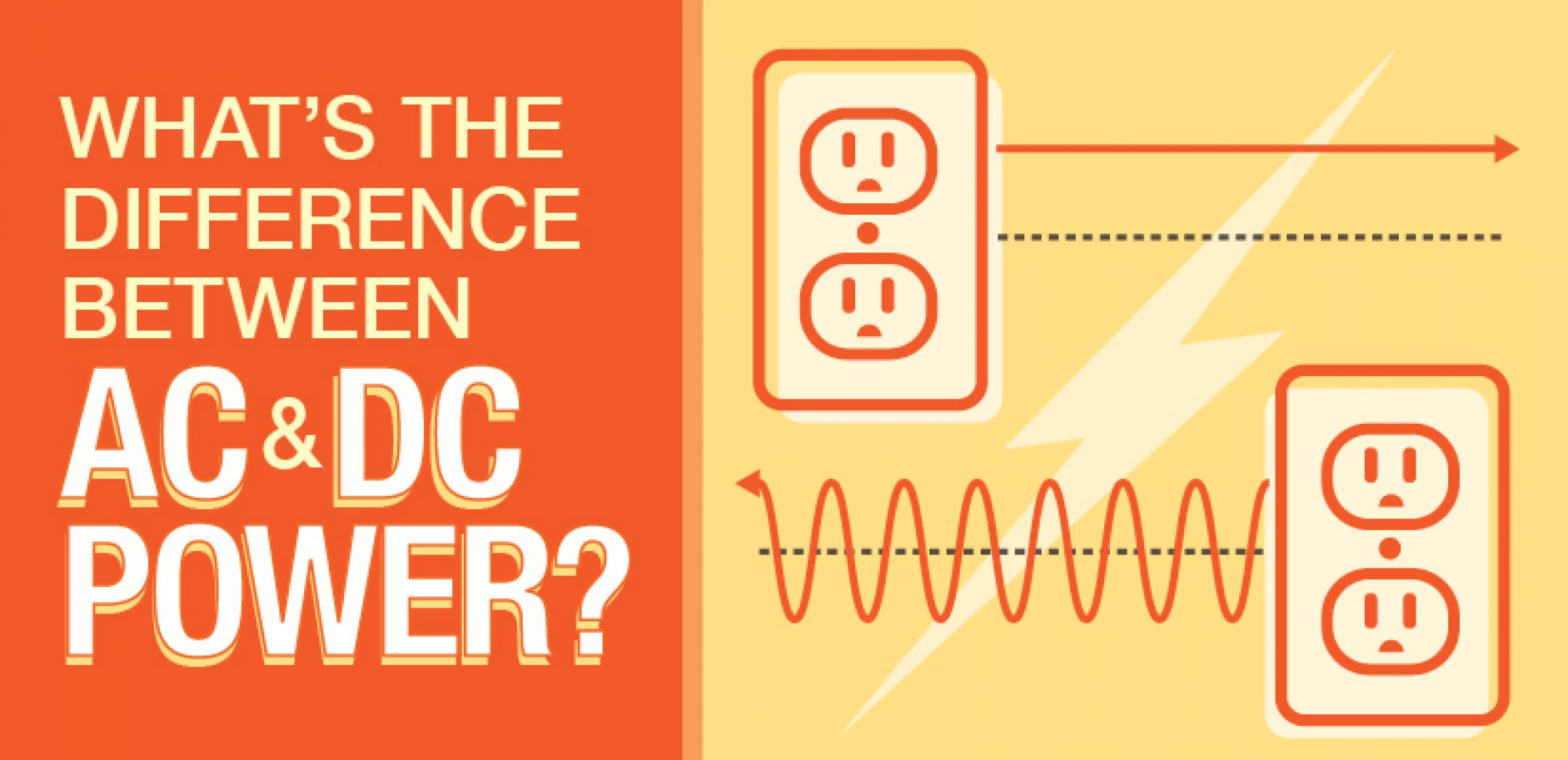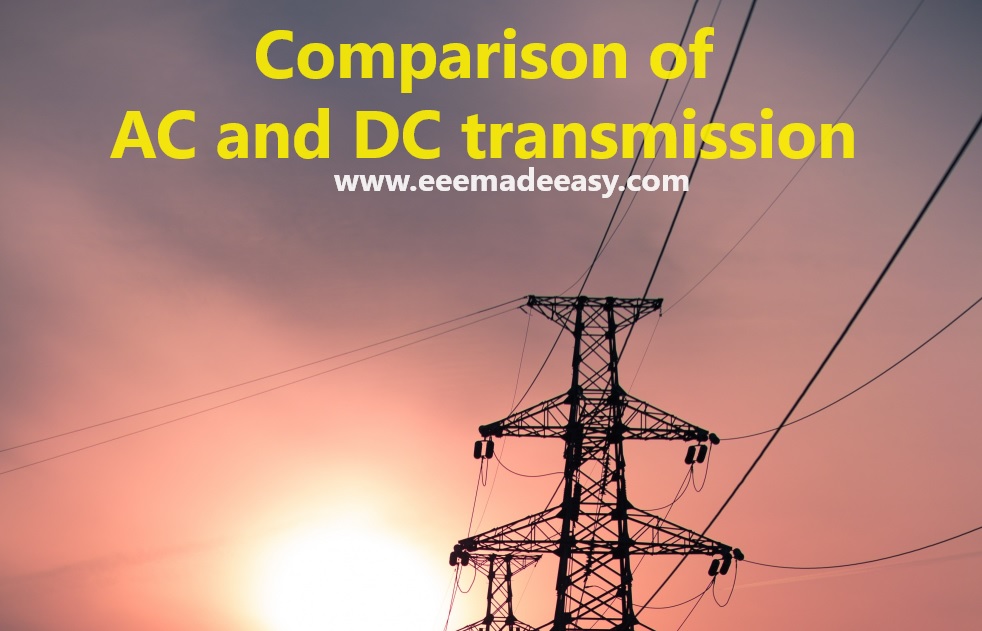Unbelievable Tips About Is AC Or DC More Powerful

What`s The Difference Between AC & DC Power? Mr. Electric Of Dallas
AC vs. DC
1. A Current Affair
Alright, let's dive into the electrifying world of alternating current (AC) and direct current (DC). You've probably heard these terms thrown around, maybe when talking about batteries or power outlets. But what's the real difference? And more importantly, which one reigns supreme in the power department? Buckle up, because we're about to unravel this complex topic in a way that's hopefully not too shocking. Think of it like comparing apples and oranges — both are fruit, but they have very different characteristics. AC and DC are both electricity, but they flow and behave quite differently.
Imagine a river flowing steadily in one direction. That's DC. Now picture a river that changes direction constantly, flowing back and forth. That's AC. Simple, right? Well, maybe not entirely, but we'll get there. The key takeaway for now is that DC flows in a single direction, while AC periodically reverses its direction.
This fundamental difference has huge implications for how these currents are used. DC is great for powering things like your phone and laptop, which use batteries. AC, on the other hand, is the lifeblood of our power grids, delivering electricity to homes and businesses across vast distances.
The idea that either AC or DC is simply "more powerful" is a bit of a misconception. Power isn't inherent to the type of current itself. It depends on other factors like voltage and amperage. It's more about which one is better suited for specific applications. So, let's explore those applications, shall we?

Comparison Of Ac And Dc Transmission EEE Made Easy
The Power Play
2. Volts and Amps
Before we declare a winner in the AC vs. DC debate, we need to talk about voltage and amperage. Think of voltage as the electrical "pressure" that pushes the current, and amperage as the amount of current flowing. Power, measured in watts, is the product of voltage and amperage (Power = Voltage x Amperage). So, to get a lot of power, you need either high voltage, high amperage, or a combination of both.
Here's where AC has a significant advantage: it's relatively easy to change the voltage of AC using transformers. Transformers can step up the voltage for efficient long-distance transmission and then step it back down to safer levels for use in our homes. This is how AC is able to travel over power lines for hundreds of miles.
DC, on the other hand, is much more difficult to transform. This made AC the preferred choice for early power grids, and it remains the dominant system today. However, advancements in power electronics are making it easier to convert DC voltage, which is opening up new possibilities for DC power distribution.
Ultimately, both AC and DC can deliver substantial amounts of power, but the ability to easily transform voltage gives AC a clear edge in large-scale power transmission. This is especially true when distances are significant, as it minimizes energy loss during transport.

Transmission Triumph
3. Long-Distance Runner
The early days of electrical power were a battle between Thomas Edison, who championed DC, and Nikola Tesla, who advocated for AC. While Edison's DC systems worked well for short distances, they couldn't efficiently transmit power over long distances without significant power loss. This is because the voltage couldn't be easily changed, and low-voltage transmission over long wires results in a lot of energy being wasted as heat.
Tesla's AC system, with its use of transformers, solved this problem. By stepping up the voltage for transmission and stepping it down for use, AC could be delivered efficiently to homes and businesses far from the power plant. This technological advantage is why AC became the standard for power grids worldwide. Imagine trying to power a city with DC requiring power plants every few blocks — not very practical!
Today, AC remains the backbone of our electrical infrastructure. Power plants generate AC, and it's transmitted over high-voltage power lines to substations, where transformers reduce the voltage for distribution to homes and businesses. Even though many electronic devices use DC internally, they rely on AC from the wall outlet, which is then converted to DC by a power adapter.
While AC's dominance in power transmission is undeniable, DC is making a comeback in certain areas, particularly with the rise of renewable energy sources like solar power. Solar panels generate DC, and modern high-voltage DC (HVDC) transmission lines are becoming increasingly important for connecting renewable energy sources to the grid. So, the story isn't quite over yet!

DC's Renaissance
4. The Rise of Direct Current
Don't count DC out just yet! While AC has been the undisputed champion for over a century, DC is experiencing a resurgence, driven by advancements in power electronics and the increasing adoption of renewable energy sources. As mentioned earlier, solar panels generate DC, and so do batteries, which are becoming increasingly common for energy storage.
Furthermore, many modern electronic devices, like computers and smartphones, operate on DC. This means that when you plug them into an AC outlet, the power adapter has to convert the AC to DC. This conversion process introduces some energy loss, so there's an argument to be made for using DC directly whenever possible.
HVDC transmission lines are also gaining popularity for long-distance power transmission, especially for connecting renewable energy sources to the grid. HVDC lines can be more efficient than AC lines in certain situations, particularly for very long distances or for transmitting power across underwater cables. They also offer better control over power flow and can help stabilize the grid.
The future of power transmission may very well be a hybrid system, with AC serving as the primary backbone and DC playing an increasingly important role in integrating renewable energy sources and powering electronic devices. The landscape is shifting, and the conversation has moved beyond simply asking "Is AC or DC more powerful?" to "How can we best utilize both AC and DC to create a more efficient and sustainable energy future?"

What Does Ac And Dc Mean In Electricity At Indiana Houlding Blog
Beyond the Outlet
5. Everyday Electrics
So, where do you encounter AC and DC in your everyday life? Well, AC is the electricity that comes out of your wall outlet, powering your lights, appliances, and most of the things in your home. As we discussed, this AC electricity is delivered from power plants over long-distance transmission lines.
DC, on the other hand, is the power source for many portable electronic devices. Your phone, laptop, tablet, and even your car battery all run on DC. These devices use batteries to store DC energy, which can then be used to power the device when it's not plugged into an AC outlet. Think about it: when you charge your phone, you're essentially converting AC from the wall outlet into DC that's stored in the battery.
Even your car is a fascinating example of how AC and DC work together. The car's alternator generates AC, which is then converted to DC to charge the battery and power the car's electrical system. It's a constant dance between AC and DC, ensuring that your car has the power it needs to start, run, and keep the lights on.
Ultimately, both AC and DC play crucial roles in our lives. AC powers our homes and businesses, while DC powers our portable devices and increasingly, renewable energy systems. Understanding the differences between these two types of current can help us appreciate the complexities of our electrical infrastructure and the advancements that are shaping the future of energy.

The Verdict
6. Working Together
So, who wins the battle of AC vs. DC? The truth is, there's no clear winner. Both AC and DC have their own strengths and weaknesses, and they're best suited for different applications. AC is the king of long-distance power transmission, thanks to its ability to be easily transformed. DC is the power source of choice for portable electronics and is playing an increasingly important role in renewable energy systems.
Instead of viewing AC and DC as competitors, it's more accurate to see them as partners, working together to power our world. Our electrical infrastructure relies on both AC and DC, and advancements in power electronics are making it easier to integrate these two types of current seamlessly.
The future of energy is likely to be a hybrid system, with AC serving as the primary backbone and DC playing an increasingly important role in integrating renewable energy sources and powering electronic devices. This hybrid approach will allow us to create a more efficient, sustainable, and reliable energy system.
Ultimately, the question isn't "Is AC or DC more powerful?" but "How can we best utilize both AC and DC to meet our energy needs?" By embracing both technologies and continuing to innovate in the field of power electronics, we can create a brighter, more electrified future for all.